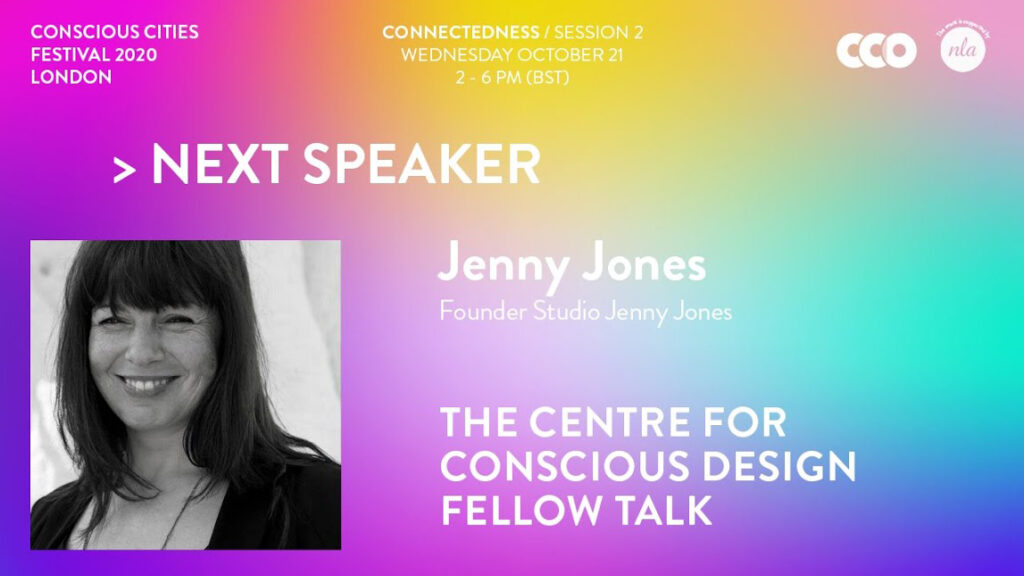When we want to describe a completely failed attempt at communication we could describe it as like “talking to a wall”. The phrase exists in so many languages that we might begin to wonder why our buildings are the primary example of bad communicators?
After all, our days are a plethora of exchanges with our environment, far more numerous than our spoken conversations, and so ingrained in how we function that we forget they are even happening. Considering that interpreting messages from our surroundings begins far before we utter our first words, I would argue that everyone’s first language is in fact spatial.
This language is what architecture speaks. Space is the medium for communication, not only for architects to manifest their intent, but as another dimension of everyone’s unspoken communication. We constantly use spatial language to communicate information to others, from temporary messages like how ajar we leave a door, to enduring expressions of our identity in how we decorate our homes.
The design and layout of buildings, streets, and public spaces convey messages about social norms, cultural values, and power dynamics. For example, the grandiosity of government buildings often symbolises authority and stability, while the intimacy of residential architecture reflects notions of privacy and community.
Urban planning and design also contribute to this dialogue by shaping the way people move through and interact with their locale. The walkability of a city, the accessibility of public spaces, and the presence of landmarks all influence social behaviour and communication patterns.
If space is the medium on which so much of our communication relies, why have we not yet studied its use with the rigor and structure applied to written and verbal communication? Why is this disparity more apparent now than ever?
The nature of the architectural experience is going through a seismic shift. Architecture is changing from static forms to dynamic, reactive entities engaging in real-time dialogue. Digitally connected spaces can adapt ambient qualities like light and sound, and in the not so far future – layouts and dimensions of spaces. The pace of dialogue is changing, feedback is almost instantly obtained and analysed, and increasingly responded to. What methods or tools do we have to study and innovate in this domain?
It is not that we haven’t endeavoured to understand spatial language, architectural styles exist. I will term them dialects here, since the language is spatial and so styles are dialects – however, these are attempts to codify aesthetic preferences emerging from specific cultural, social, or ideological contexts. Adopting an architectural style in the belief of it’s ‘correctness’ is comparable to believing that Spanish, or Hebrew, or any spoken language for that matter contains a complete reflection of the human experience. These efforts are more akin to advocating for the tone in which one speaks, or the subjects that one should speak about – but don’t necessarily investigate how one speaks.
The emergence of spatial language
Living beings use their environments ingeniously to communicate messages to others, demonstrating remarkable adaptations that enhance their survival and reproductive success. Beavers, for example, construct elaborate dams that serve as signals of territorial dominance and engineering prowess.1 Birds such as bowerbirds create intricate and visually striking structures called bowers, which they decorate with brightly coloured objects to attract females.2 Male pufferfish impress potential mates by rearranging sand into intricate and precise ‘crop circle’ formations that reduce the flow rate of water at their centre.3
These architectural feats are not just functional but also communicative, showcasing the builder’s health and skill. Ants leave pheromone trails4, a chemical form of environmental modification, which guide their colony mates to food sources or alert them to danger. Each of these examples illustrates how animals not only adapt to their environments but also actively manipulate them to convey vital information such as mating qualifications, territorial boundaries, and community resources, ultimately facilitating complex social interactions and evolutionary strategies.
Using the environment to embed and convey messages therefore happened alongside and was part of human development. Humanoids – predating homosapiens – carved petroglyphs5 into rock faces and cave walls, not only as artistic expression but also to communicate information about territorial boundaries, spiritual beliefs, or successful hunting grounds to others within their group or to future generations.
These early forms of environmental modification served as durable, long-lasting messages that could be revisited and understood over centuries. Additionally, trails and paths worn into landscapes by repetitive use indicated routes to water sources, seasonal camps, or migration paths, effectively embedding practical knowledge into the very terrain. Such environmental cues provided crucial information, helping to guide daily decisions and cultural practices, demonstrating the deep connection and understanding early humans had with their surroundings.
Intuitive and learned aspects of spatial language
Research into how people react to different aesthetics, particularly in the context of sharp versus rounded objects, reveals fascinating insights into human psychology and perception. Some studies have shown that humans tend to perceive rounded objects and environments as safer and more welcoming than sharp-edged ones.6 Rounded shapes are often associated with approachability and comfort, which can be traced back to evolutionary psychology. The absence of sharp points means less threat of harm, which might explain why these forms are generally preferred.
In cognitive psychology, studies suggest that our brains process rounded shapes more easily than angular shapes.7 Rounded shapes are perceived as simpler and more complete, which may lead to a more positive emotional response.
Interestingly the use of intuitive spatial language was proposed to solve a design problem for how to signal danger to people in the far future who will be part of different cultures with different vocabularies and symbols. In 1993, Sandia National Laboratories compiled a report dedicated to preventing unauthorised access to the Waste Isolation Pilot Plant (WIPP)8, a deep geological facility in New Mexico designed for the storage of nuclear waste. A “Spike Field” was suggested9, harnessing intuitive reactions to sharpness as a non-verbal or symbolic warning of danger.
Learned spatial language can also be picked up similarly to verbal or written communication and develop over time as part of collective cultural systems of meaning.
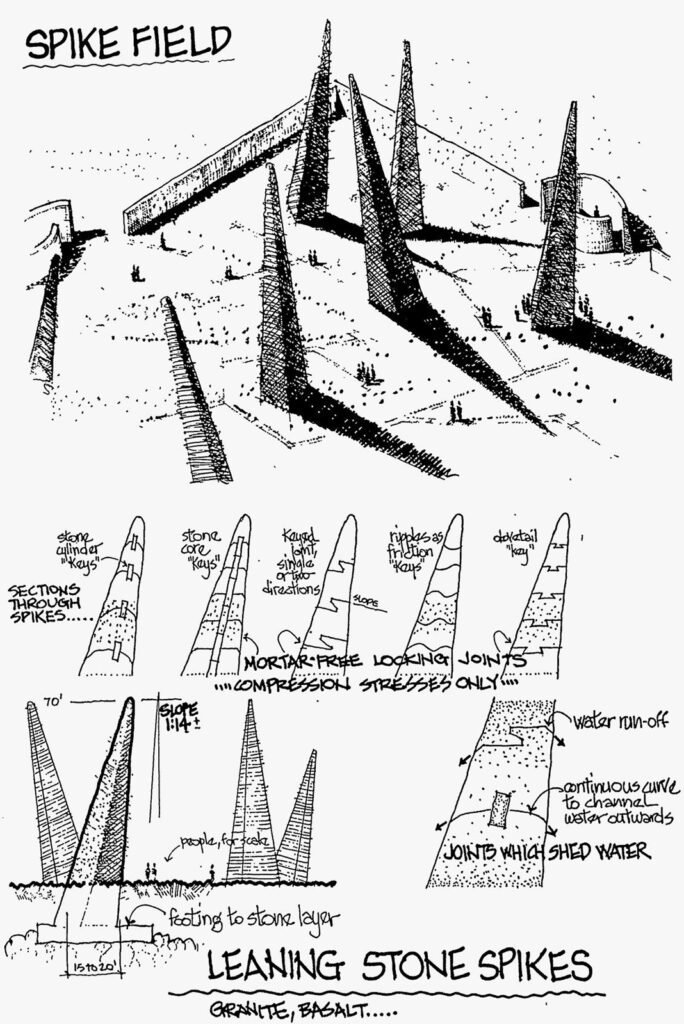
University of North Texas Digital Library
Emergence of architecture as spatial language
The beginnings of architecture in human society marked a significant evolution in how communities organised their spaces and expressed their values and identities. As humans transitioned from nomadic to settled lifestyles, architecture became a medium not just for shelter but for conveying social, political, and spiritual messages.
The aesthetic choices made in early architectural endeavours developed into what we call vernacular styles, each a dialect with coded meaning. The visual messaging embedded in vernacular architecture conveys rich information about the community’s identity, values, relationship with the landscape, but also useful information for day-to-day communication. The examples of these physically embedded exchanges of information are countless but we can understand them through a few examples.
The Greek architectural orders—Doric, Ionic, and Corinthian—embody distinct cultural values and philosophical insights central to ancient Greek civilization. The sturdy, minimalist Doric order symbolised strength and masculinity, often used in temples dedicated to male gods, exemplifying austerity and resilience, as seen in the Parthenon. In contrast, the more slender and ornate Ionic order, with its scrolled capitals, represented wisdom, elegance, and femininity, suitable for structures related to arts and learning. The most elaborate, the Corinthian order, adorned with acanthus leaves, signified celebration and luxury, reflecting the artistic and intellectual flourish of Hellenistic Greece. Collectively, these orders not only support physical structures but also convey deep symbolic meanings, linking architectural aesthetics to the philosophical and cultural ethos of their time.
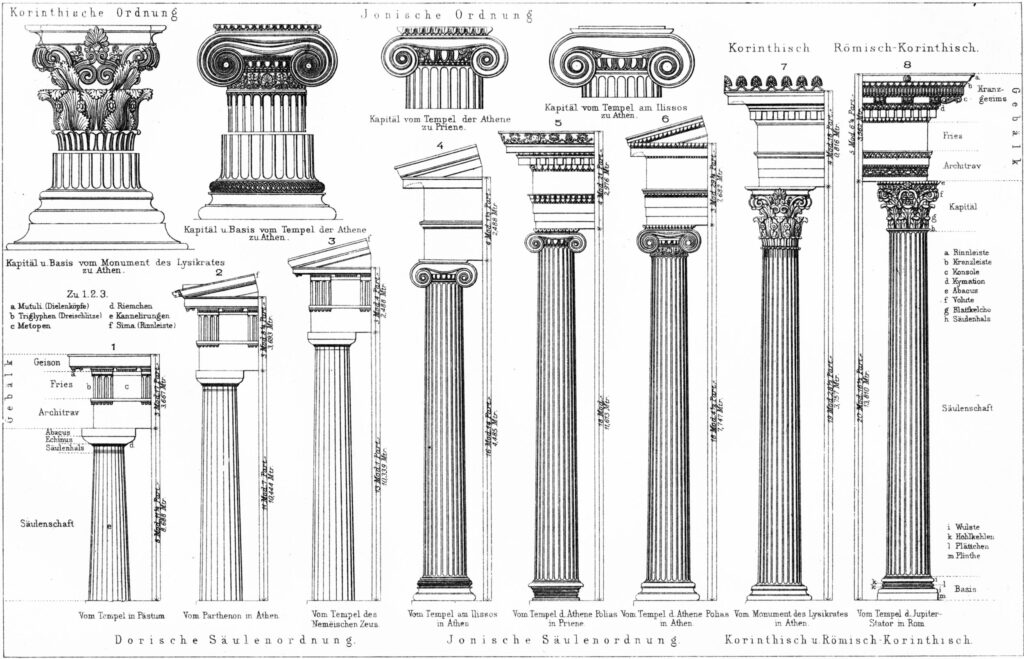
In Venice, the use of colours on the iconic palinas, the mooring poles with twisting coloured stripes, serves both a practical and aesthetic purpose. These vibrant poles, traditionally used to mark docking spaces along the canals, help gondoliers identify specific locations and manage the complex waterways of the city. Each pattern and colour scheme often indicates a particular family or district, aiding in comprehension, orientation and navigation.

Modernism emerged in the early 20th century, characterised by an emphasis on function, simplicity, and the use of new materials like steel and glass. Architects like Le Corbusier and Mies van der Rohe championed the idea of buildings as “machines for living.” The stark, minimalistic aesthetic and the focus on efficiency generated a spatial language that accentuated notions of functionality and restraint. For this reason modernist buildings speak a dialect with a vocabulary that can be seen as poorly reflecting the richness of human expression. Particularly in public housing projects, modernist buildings have been criticised for being impersonal and uninviting, leading to their decline or demolition.
Deconstructivism for example adopted a dialect characterised by fragmented, chaotic forms and a rejection of traditional architectural coherence. Prominent architects like Frank Gehry and Zaha Hadid created striking, unconventional buildings that challenged perceptions of space and structure. However, the complex, often disorienting designs can be difficult to navigate and inhabit, perhaps because the structure of their grammar is incoherent or their lexicon is a mixing of terms that evade meaning. As a result, deconstructivist buildings sometimes struggle to maintain their relevance and utility over time.
In each of these examples, architectural styles developed strong identities and aesthetic principles. However, their failure to consistently address universal human needs – such as comfort, accessibility, and emotional resonance – as well as their inorganic and prescriptive top-down nature created dialects that have fallen out of practical use.
Historical efforts to codify spatial language
Since ancient times, buildings have been designed to convey messages. For example, the grandeur of the Egyptian pyramids or the intricate carvings of Hindu temples were not merely aesthetic choices but deliberate communication of power, spiritual beliefs and existential meaning.
Early theorists like Vitruvius, in his seminal work De Architectura, articulated the principles of ‘good architecture’. Emphasising the importance of utility, strength, and beauty, this early attempt at codifying an architectural dialect laid the groundwork for future explorations into how spaces speak.
One of the pivotal theories to mention is James J. Gibson’s concept of affordances, introduced in his 1979 book The Ecological Approach to Visual Perception. Gibson proposed that the environment offers various affordances, or opportunities for action, to an individual. For instance, a staircase affords climbing, a bench affords sitting, and a window affords looking through.10
In 1988, Donald Norman adapted the term affordances to denote the “action possibilities” that are obvious to users. This interpretation, popularized through his book The Design of Everyday Things, diverges from Gibson’s original concept by considering not just the physical capabilities of an actor, but also their goals, beliefs, and past experiences.11 This brings us closer to the reality that spatial communication is bidirectional and therefore has dimensions that can indicate the quality of a dialogue.
Christopher Alexander’s A Pattern Language (1977) aims to codify the principles of architectural design and urban planning into a coherent system of patterns. The book presents a structured framework of 253 patterns, each addressing a specific problem related to the design of buildings, spaces, and communities.12 These patterns range from the layout of entire cities to the arrangement of rooms within a house, providing a dialect that designers can use to create more human-centric and aesthetically pleasing environments. Alexander’s approach emphasises the interconnectivity of these patterns, if you like, a nod to the fact that language has structure, grammar and syntax – but arrives at a finite number of expressions.
Originating from the research of Bill Hillier and his colleagues at University College London in the 1980s, Space Syntax focuses on the relationships between spatial configurations and social outcomes.13 It translates the physical environments into a form of spatial notation by codifying how spaces are arranged and how they connect with each other. This notation is represented through the use of graphs and maps that depict spatial relationships within built environments. It examines the directness, connectivity, and integration of various parts of a space to understand how these factors influence movement, visibility, and interaction. Developed primarily as a tool to predict movement patterns, with a focus on spatial arrangements – its use has become too niche to properly address the full complexity of spatial experience, spatial communication, and spatial expression.
The need for a robust theoretical framework
Topolinguistics, a term emerging from the synthesis of topology and linguistics, proposes a holistic approach to the study of how the physical realm acts as a medium of communication for people through space, place, and our interactions with them. The roots of this concept lie in various domains, including the history of architectural theory, cognitive science, ecological psychology, and communication theory.
Topolinguistics explores the idea that places are not just physical locations but dynamic entities that engage in a continuous conversation with their inhabitants – the people-place dialogue. By studying this interplay, topolinguistics aims to uncover the ways in which our environments influence communication and, conversely, how our communicative practices shape the spaces we live in.
In order for useful knowledge to emerge from this proposed field, methods for understanding the forms and effectiveness of spatial communication require an analytical approach. A number of useful examples exist in analytical theories that give structure to understanding communication as a whole.
Communication Theory, the systematic study of how information is transmitted and received, offers a methodological framework that can be applied to topolinguistics. The Interaction Model of Communication Theory developed by Wilbur Schramm expands on simpler linear models by introducing feedback and considering context, it is a more dynamic depiction of the communication process14 and is analogous to Norman’s development of Gibson’s affordances by integrating aspects of perception. Schramm’s model includes the following components: Sender (Encoder), Message, Channel, Receiver (Decoder), Feedback, Noise, and Context. I will show how each of these can be applied to spatial language.
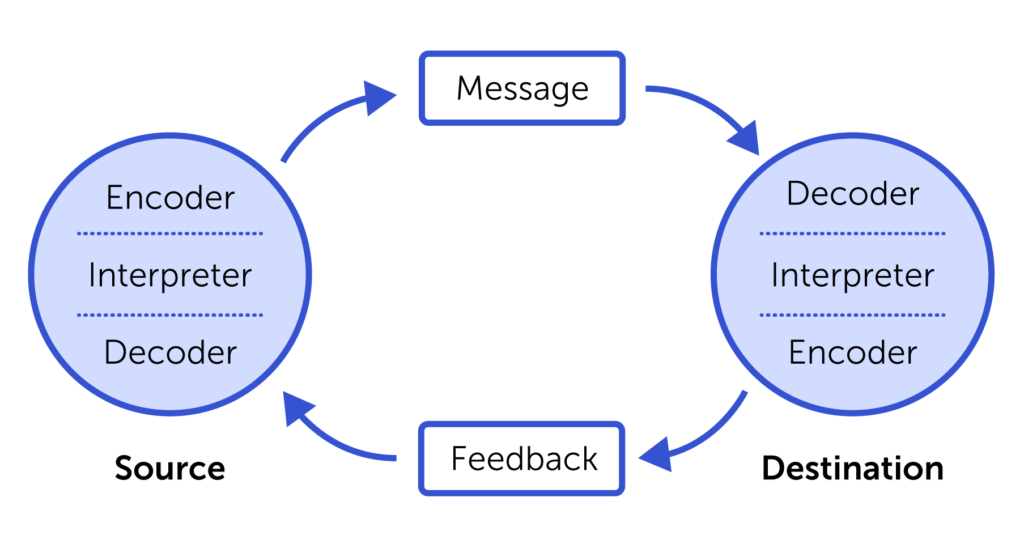
Image: Itai Palti
Adapting Communication Theory
Adapting the Interaction Model of Communication Theory to spatial dialogue involves conceptualising places as active participants in communication, akin to human interactants. This adaptation necessitates viewing places not merely as passive backdrops but as dynamic entities that influence and are influenced by human behaviour and perception. The following outlines how the key components of the Interaction Model can be reinterpreted to fit the context of person-place interactions.
| Sender (Encoder) | In spatial dialogue, the sender can be either the person or the place. When the person is the sender, they interact with and modify the environment through their actions, behaviours, and expressions. Conversely, when the place is the sender, it “communicates” through its design, layout, natural features, and cultural symbols, which convey meanings and evoke responses. |
| Message | The message in this dialogue encompasses the information and cues exchanged between the person and the place. For a person, the message could be their emotional reactions, physical movements, or verbal expressions within the space that take a spatial form. For the place, the message is conveyed through its physical attributes, ambiance, spatial arrangements, and sensory stimuli that impact the individual’s experience. |
| Channel | The channel in spatial dialogue includes the various means through which messages are transmitted. This can involve sensory channels such as visual, auditory, tactile, olfactory, and kinesthetic experiences. For example, the visual aesthetics of a park, the sound of a fountain, the texture of building materials, the smell of flowers, and the overall spatial configuration all serve as channels of communication from the place to the person. |
| Receiver (Decoder) | The receiver in this context is the entity that interprets and responds to the message. When the person is the receiver, they decode the environmental cues and stimuli, forming perceptions and emotional responses. When the place is the receiver, it metaphorically “receives” the person’s actions, which may alter its state—such as a garden being cultivated, an urban space being activated by human presence, partitions being moved, windows opened, walls painted, desks decorated. |
| Feedback | Feedback in spatial dialogue is crucial for a dynamic interaction. From the person’s side, feedback could be their behavioural adjustments, expressions of satisfaction or dissatisfaction, and modifications to their activities based on their experience of the place. From the place’s side, feedback might involve environmental changes resulting from human actions and expression. Some of these might emerge over time, like desire lines, while other forms of expression are more direct, like the opening and closing of window blinds. |
| Noise | Noise in this dialogue represents any factor that distorts or disrupts the intended communication between person and place. This can include environmental pollution, overcrowding, poor design, or conflicting symbols and messages that create confusion or discomfort for the person, or difficulty in comprehension for the place. |
| Context | The context encompasses the broader situational factors that influence person-place interaction. This includes the physical context (geographic location, weather), cultural context (historical significance, cultural norms), social context (presence of others, social dynamics), and temporal context (time of day, season). Understanding these contexts is essential for interpreting the messages exchanged, but also in assessing the relevance of the message to the situation. |
Example scenario: Consider an urban plaza designed to foster social interaction and relaxation. The plaza (place as sender) communicates through its features: inviting benches, greenery, water features, and art installations. A visitor (person as receiver) enters the plaza and experiences these elements, feeling a sense of calm and community. The visitor (person as sender) responds by sitting on a bench, engaging in conversation, or reading a book, thus activating the space. The plaza (place as receiver) shows signs of successful interaction through the presence of people and maintained facilities. Feedback occurs as the visitor decides to return frequently, and the city maintains or enhances the plaza based on observed usage patterns and public feedback.
Adapting information and communication models to fit the dynamic and reciprocal nature of people-place interactions emphasises the active roles both parties in shaping experiences. They can be developed to provide a valuable framework for researchers, urban planners, and designers to create and manage spaces that enhance human well-being and ecological health.
Technology and the future of architecture
The future of architecture promises a radical transformation towards adaptability and reactivity, propelled by advancements in technology and artificial intelligence (AI). As we enter into this new era, buildings are no longer static entities; instead, they are evolving into intelligent systems capable of responding dynamically to their environment and the needs of their occupants.
Architectural design is increasingly integrating AI to create buildings that can adapt in real-time. This involves the use of sensors and IoT (Internet of Things) devices that monitor various factors like light, temperature, occupancy, and use. Such technologies enable structures to automatically adjust spatial qualities and event layouts.
Interactions between people and adaptive spaces currently use a intermediary – a visual interface on a screen, or a verbal communication platform like Alexa. These are solutions extracted from existing mediums and are relatively unsophisticated even given the current state of technology. Popular science fiction has portrayed this interface in different forms – from HAL in Stanley Kubrick’s Space Oddysey to a holographic A.I. in Laeta Kalogridis’ Netflix adaptation of Altered Carbon.
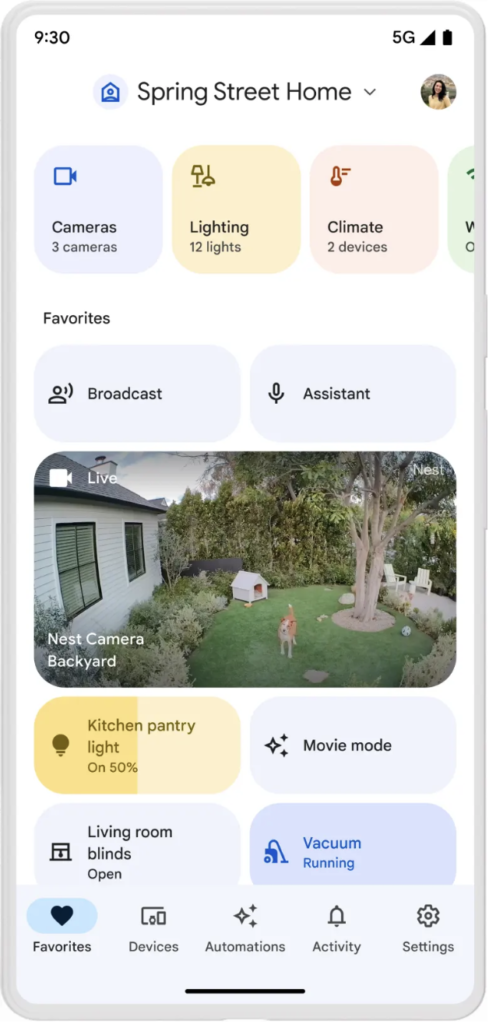
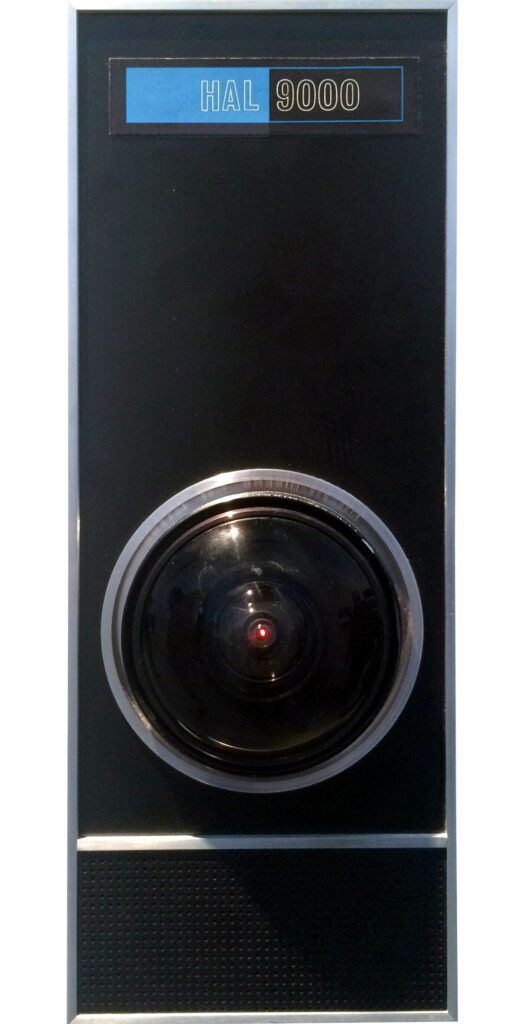

Centre: HAL 3000, the intelligence controlling a spaceship in Stanley Kubrik’s “Space Oddysey”
Right: Edgar Allan Poe holographic AI that controls a hotel in Laeta Kalogridis’ Netflix adaptation of “Altered Carbon”
Yet, in all of these real and imagined interfaces, a physical or visual presence is needed as a proxy for space. Is this because communicating with an invisible intelligence feels unnatural to us – or is it rather a matter of trust?
Trust
The nature of spatial dialogue differs from interpersonal interactions, with the partner for communication and its intelligence possessing an invisible quality. This dynamic requires the recognition of an added dimension: trust.
Trust is fundamentally important in our interactions with technology and artificial intelligence (AI), particularly concerning issues of privacy and psychological comfort. As technology becomes more integrated into places we inhabit, the need for reliable and secure systems becomes paramount. Trust in technology is predicated on our confidence that personal information is handled securely and used appropriately, without unauthorised access or misuse.
The existing literature on trust in technology utilises two distinct trust constructs. One approach is human-like, using constructs such as benevolence, integrity, and ability. The other approach is system-like, focusing on constructs like helpfulness, reliability, and functionality.15 These are indications that dialogue with technology requires consistency and transparency, ensuring that people feel in control of the technology they use rather than feeling controlled by it.
The evolving capabilities of technology pose further opportunities and challenges in fostering trust. Machine learning algorithms have already proven to be as effective as humans in emotion recognition16 in audio recordings, for example. In the near future technology may also posses super-human social capabilities, how will we feel about interacting with entities we know are far superior in intelligence, including perhaps, emotional intelligence?
For this reason, a science of spatial dialogue requires an added dimension to existing models in communication theory:
| Trust | Trust affects how users perceive and interact with intelligent and adaptive spaces, influencing their comfort and willingness to rely on automated adjustments to their environment. It evaluates the confidence in the technology and the safeguarding of their privacy and data security, as well as transparency in its use. Trust is therefore a pivotal factor in designing AI-integrated spaces that are not only effective at communication but also genuinely attuned to the needs and expectations of people. |
Opportunities offered by topolinguistics – a science for spatial dialogue
Topolinguistics could provide a robust framework for exploring and enhancing the ways in which people communicate with – and through – their environments. A nuanced understanding of spatial expression enables the evolution of aware and responsive environments as dynamic communicators, creating richer people-place dialogues that positively influence human well-being.
By establishing foundational principles for topolinguistics, practical applications can emerge across a variety of disciplines, including urban planning, architecture, environmental studies, and the social sciences. For architects and designers, a deeper understanding of spatial expression provides the necessary tools to represent people’s needs and communicate their intentions more effectively.
Mastering languages does more than just expand our ability to communicate; it opens up entirely new ways to perceive and become aware of the world around us. We can broaden our knowledge and appreciation of diverse ways of perceiving, thinking, and being – deepening our understanding of ourselves in the world.
Insights that emerge from a new science of spatial dialogue can contribute to improved spatial literacy and spatial metacognition for all, providing the tools to build healthier relationships with the places we inhabit.
What if places became proactive participants in the pursuit of health, wellbeing, connection and creativity? What if “talking to a wall” meant something completely different?
References
1 Rosell, Frank, and Róisín Campbell-Palmer, ‘Territoriality, communication, and populations’, Beavers: Ecology, Behaviour, Conservation, and Management (Oxford, 2022; online edn, Oxford Academic, 17 Feb. 2022), DOI: https://doi.org/10.1093/oso/9780198835042.003.0007, accessed 1 July 2024.
2 Madden, J.R. Bower decorations are good predictors of mating success in the spotted bowerbird. Behav Ecol Sociobiol 53, 269–277 (2003). DOI: https://doi.org/10.1007/s00265-003-0583-6.
3 M. C. Catalbas and A. Gulten, “Circular structures of puffer fish: A new metaheuristic optimization algorithm,” 2018 Third International Conference on Electrical and Biomedical Engineering, Clean Energy and Green Computing (EBECEGC), Beirut, Lebanon, 2018, pp. 1-5, DOI: https://doi.org/10.1109/EBECEGC.2018.8357123.
4 von Thienen, W., Metzler, D., Choe, DH. et al. Pheromone communication in ants: a detailed analysis of concentration-dependent decisions in three species. Behav Ecol Sociobiol 68, 1611–1627 (2014). DOI: https://doi.org/10.1007/s00265-014-1770-3
5 Ehrenreich, B. (2019, December 12). Humans were not centre stage: ancient cave art painting Lascaux, Chauvet, Altamira. The Guardian. https://www.theguardian.com/artanddesign/2019/dec/12/humans-were-not-centre-stage-ancient-cave-art-painting-lascaux-chauvet-altamira
6 Bar, M., & Neta, M. (2006). Humans Prefer Curved Visual Objects. Psychological Science, 17(8), 645-648. DOI: https://doi.org/10.1111/j.1467-9280.2006.01759.x
7 Palumbo L, Ruta N, Bertamini M. Comparing Angular and Curved Shapes in Terms of Implicit Associations and Approach/Avoidance Responses. PLoS One. 2015 Oct 13;10(10):e0140043. DOI: https://doi.org/10.1371/journal.pone.0140043. PMID: 26460610; PMCID: PMC4603793.
8 Trauth, K M, Hora, S C, and Guzowski, R V. Expert judgment on markers to deter inadvertent human intrusion into the Waste Isolation Pilot Plant. United States: N. p., 1993. DOI: https://doi.org/10.2172/10117359.
9 Science History Institute. (n.d.). Speaking to the future. Science History Institute. https://www.sciencehistory.org/stories/magazine/speaking-to-the-future,, accessed 1 July 2024.
10 Gibson, J. J. (1979). The Ecological Approach to Visual Perception. Houghton Mifflin.
11 Norman, D. A. (1988). The Design of Everyday Things. Basic Books.
12 Alexander, C., Ishikawa, S., & Silverstein, M. (1977). A Pattern Language: Towns, Buildings, Construction. Oxford University Press.
13 Hillier, B., Leaman, A., Stansall, P., & Bedford, M. (1976). Space Syntax. Environment and Planning B: Planning and Design, 3(2), 147-185. DOI: https://doi.org/10.1068/b030147
14 Littlejohn, Stephen W.; Foss, Karen A. (2009). Encyclopedia of Communication Theory. SAGE Publications. p. 176. ISBN 978-1-4129-5937-7.
15 Lankton, Nancy K.; McKnight, D. Harrison; and Tripp, John (2015) “Technology, Humanness, and Trust: Rethinking Trust in Technology,” Journal of the Association for Information Systems, 16(10), DOI: https://doi.org/10.17705/1jais.00411
16 Diemerling, H.; Stresemann, L.; Braun, T.; von Oertzen, T. (2024). Implementing machine learning techniques for continuous emotion prediction from uniformly segmented voice recordings. Frontiers in Psychology, 35(1), 1300996. DOI: https://doi.org/10.3389/fpsyg.2024.1300996







